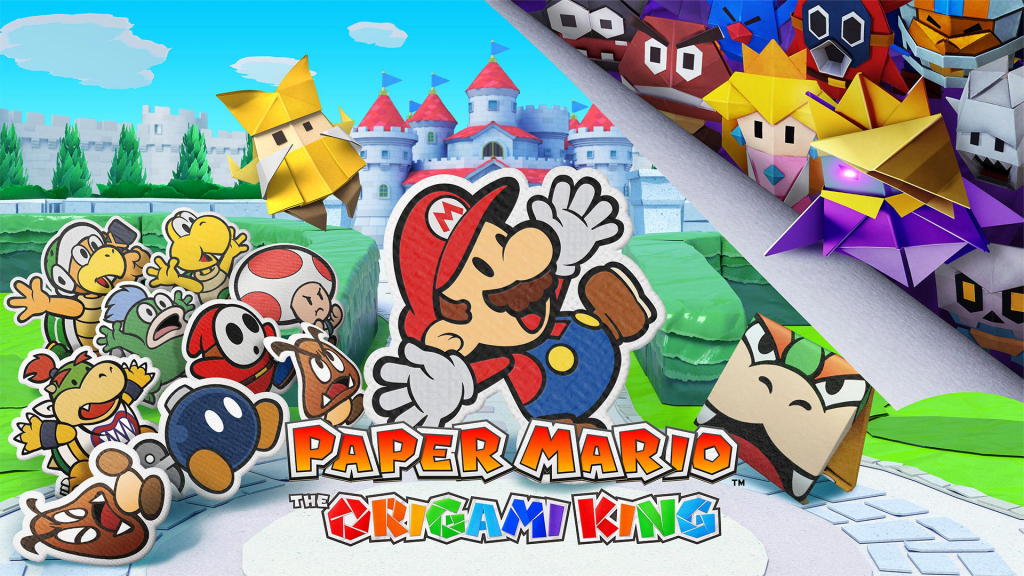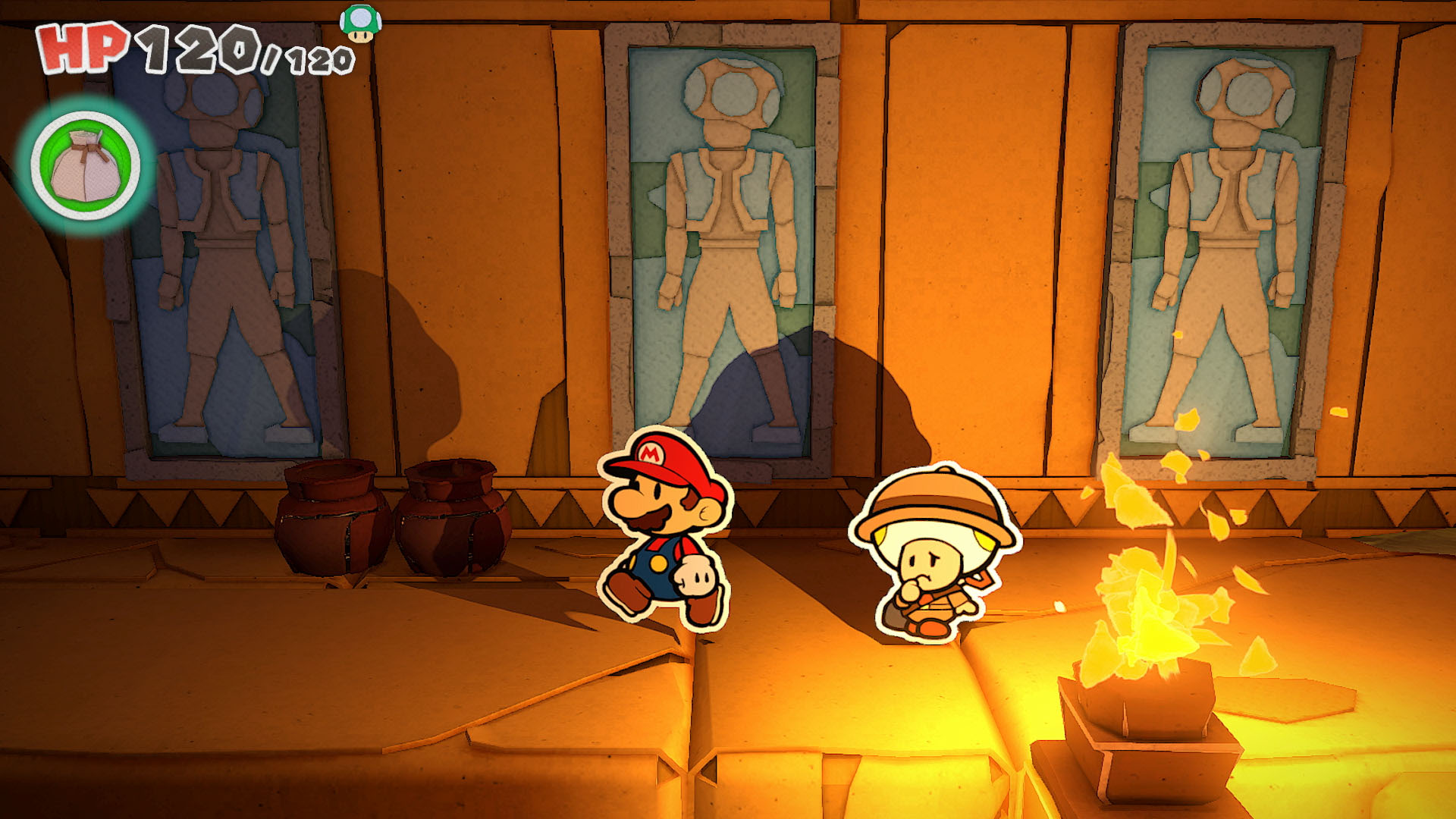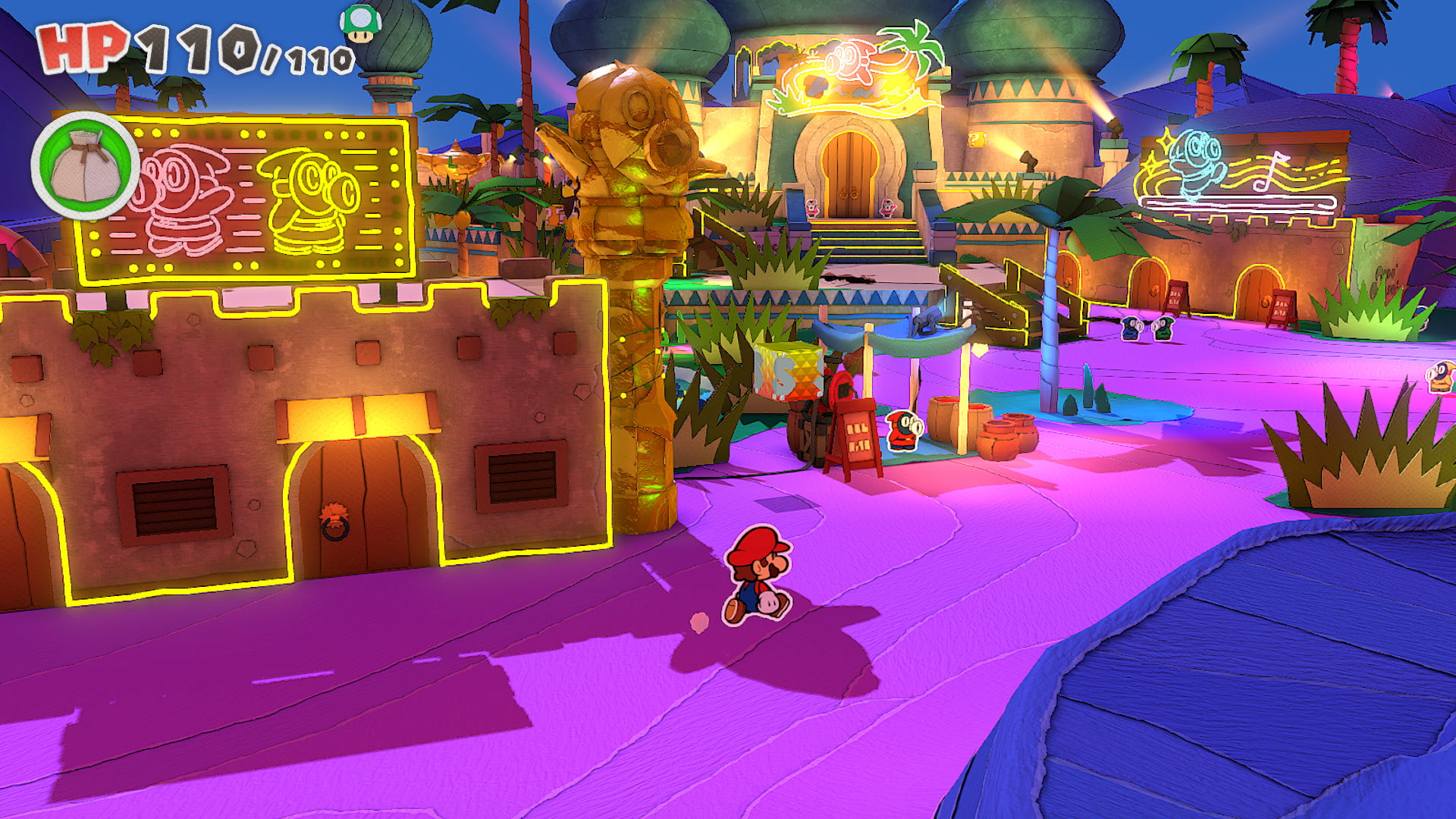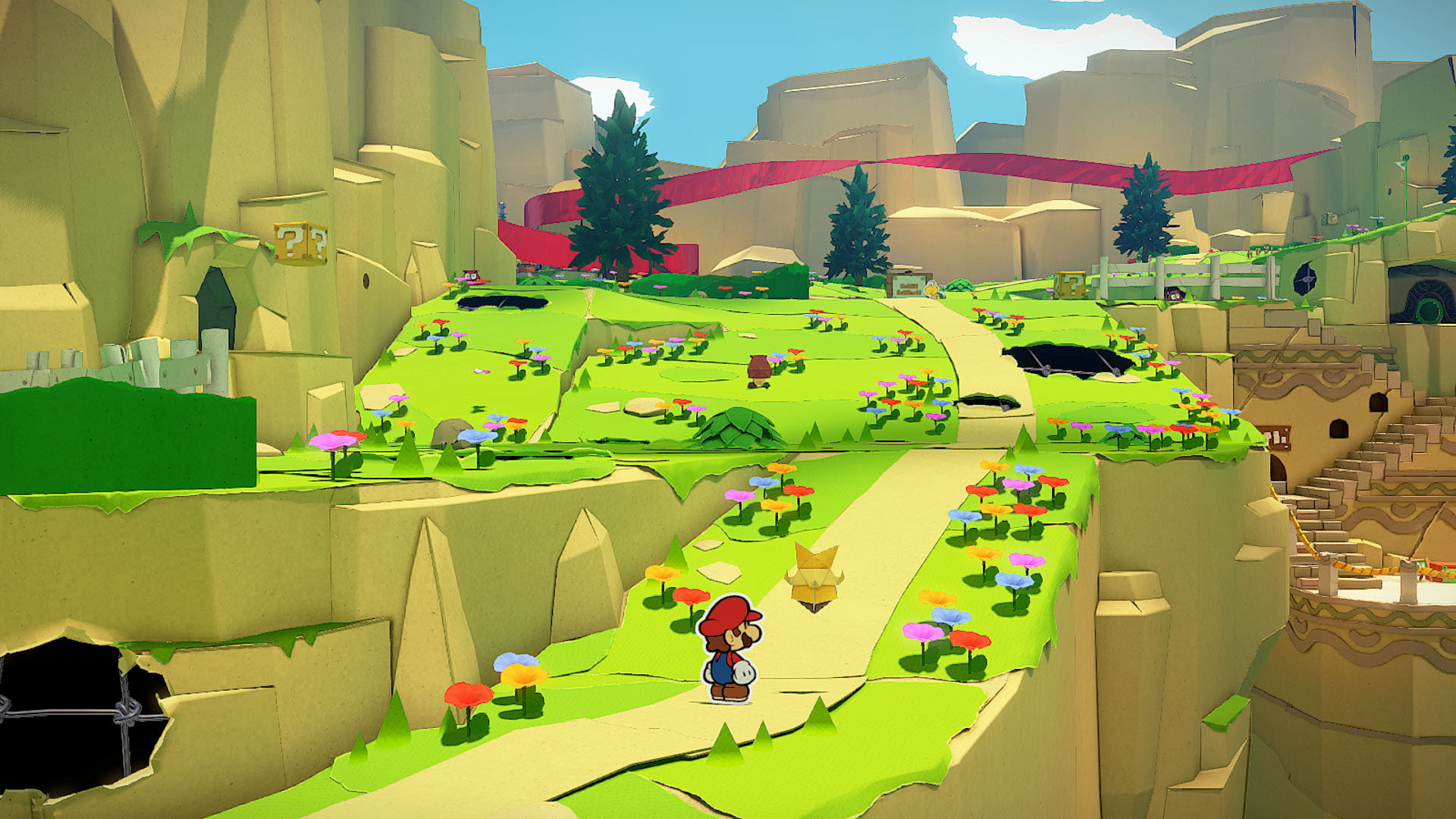For some time now the Paper Mario series has occupied this odd middle ground between the likes of Yoshi and Kirby do Arts and Crafts, and the mainstay blockbuster Mario games. While titles like Kirby’s Epic Yarn and Yoshi’s Wooly World have successfully carved out a niche of their own, Paper Mario has historically been a little confused about its target audience. 2016’s Paper Mario: Colour Splash on the Wii U, with its lack of party members, card-based combat, no XP system and a clear targeting of younger audiences, was a death knell for a lot of fans of the series’ more hardcore, RPG-inspired origins.
Paper Mario: The Origami King for Switch, a console that at this point has seen the reinvention of many Nintendo franchises, represents yet another chance for a creased and smudged series to spring out of the recycling, re-folded, crisp and ready for a new adventure.
The story begins with Olly, the self-proclaimed Origami King gatecrashing the Origami Festival being held in Toad Town where he turns Peach and all the Toads into lifeless Origami versions of themselves before spiriting Peach’s castle to a distant mountaintop. It’s up to Mario and the Origami King’s sister Olivia, to journey the land, save all the Toads and sever the six streamers that bind Peach’s castle in place.
More than perhaps any other game in the series, The Origami King really leans into being an action-adventure game rather than a sidescroller or RPG. Each streamer is tied down to a different region and a lot of work has been done to present a cohesive world with each of these areas being connected in a logical but surprising way. Rather than simply going through a warp pipe and appearing in a totally different location, you might instead have to traverse a rushing river in a canoe or speed through a desert in a boot-car. It really does feel like going on a grand adventure.
The environments are simple from a gameplay perspective, you move Mario through, whacking pretty much everything in sight with his hammer in case it contains a trapped Toad, or coins, or confetti, or a collectible, solve a few puzzles, fight a few enemies and explore. It’s linear, but also relaxing and charming. The aesthetics of each area differ greatly and one of the most exciting things about this game was just getting to see what the next area looked like. From a Feudal Japan theme park to a wide-open sea, The Origami King is filled to the brim with colour and creativity.
This same creativity is seen in the variety of gameplay too, just when I was beginning to grow tired of exploring or fighting I’d be blindsided by some bizarre minigame or an anthropomorphised tree bursting into song. There’s some pretty cool use of HD Rumble and motion controls to be found here too, both in puzzles and combat.
The music is also worth a mention, there are some truly epic tracks considering the subject matter at hand. Some of the songs in the final stages of the game sound like something from Fire Emblem or Xenoblade rather than Paper Mario.
Mario, of course, doesn’t speak, which means the majority of the dialogue comes from Olivia, a handful of characters that join the party, and the various Toads, Koopas and Goombas of the Paper Mario world. The writing is genuinely sharp and funny throughout, reminding me of the vibes of a good Saturday morning cartoon. It manages to stay kid-friendly while also being witty, referential and engaging for adults as well.
It’s a shame Nintendo seems so reluctant to allow for more variety when it comes to unique characters, with there, in fact, being a mandate that stopped the developers going crazy with different visual designs for Toads etc. Paper Mario is a series that is only made better by its wacky side characters and so for Nintendo to actively stifle this is truly bizarre. The companions that (temporarily) join Mario and Olivia are endearing in their own way, but there is definitely some potential lost here.
The combat system is odd, to say the least. Instead of traditional turn-based or real-time battles, each fight is more like a puzzle. Mario is placed at the centre of a circular ‘board’ and you must rotate and slide different sections of the board to line up enemies to optimise your damage output. You can either line four enemies in single file and use Mario’s jump attack to bounce off them one after the other or use his hammer to hit four enemies closer to the centre in a 2 x 2 formation. The enemies will then have their turn to strike, and all you can do is hold A at the right time to block, but not completely nullify any incoming damage.
It’s… a functional system and yet it quickly becomes a chore. The variation and the escalating challenge stems largely from the number of enemies, the amount of damage they do and their hit points, rather than any mastering of deep systems or resource management. You get coins from fighting, which can be used to buy various items like mushrooms to heal, fire flowers to deal damage, as well as specials kinds of boots for jumping attacks, and hammers for… hammering. There’s no XP or levelling up of any kind, however, which makes fighting feel largely like a waste of time, especially as the game drags on.
The exception to the above is with the boss fights, where Mario instead must make his way to the centre of the circle from the outside edge of the board to damage the boss by lining up the correct sequence of arrows and ability tiles. There are definitely some fun mechanics at play in these encounters and while the adversaries themselves are kinda bizarre (only Nintendo would commit to making a boss fight with a box of coloured pencils), these encounters were a welcome break from regular combat and require some actual thought.
That is, aside from the numerous instances where working out how to defeat a boss was complete trial and error. More than one boss fight had me dying instantly after fighting it for some time due to a mechanic that hadn’t revealed itself yet. There are letters that Mario can pick up during a fight that will hint at a boss’ weakness or how to avoid a particularly devastating attack which, aside from being a dull way to deliver that information, weren’t always comprehensive. If a bosses mechanics are so punishing you have to spell out exactly how to avoid them or else you’ll instantly lose the fight, that’s not a good boss fight.
There are a number of other things that drag down the overall experience. The dialogue text is definitely too slow and while it’s not unbearable an option to speed things up would’ve been greatly appreciated. The tutorials are bit tedious too and Olivia can chime in a little too frequently with how to solve puzzles or where to go next. I get they have to cater to younger audiences but again, having the option to tone them down would’ve been nice. Finally, the game overstays its welcome by just a little bit. Going through the penultimate area was a slog compared to everything before it, due in no small part to the ramp-up in difficulty which just made the already mediocre combat downright tedious.
Ultimately, Paper Mario: The Origami King is a jubilant, funny and visually pleasing adventure that serves well as a near-mindless distraction from the state of the real world, and is a welcome break from the zombie apocalypses and blood-soaked tales of revenge found elsewhere in gaming. It’s not without its flaws, but it would seem the Paper Mario formula has once again found. Now if only Nintendo would lighten up a bit so we can get Paper Waluigi DLC.
Rating: 7.5/10
Paper Mario: The Origami King was reviewed using a code provided by Nintendo.




